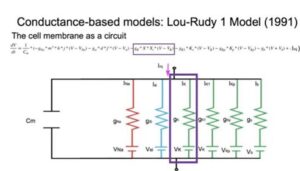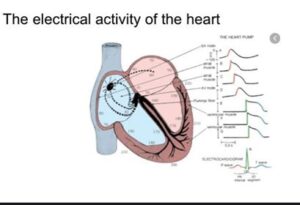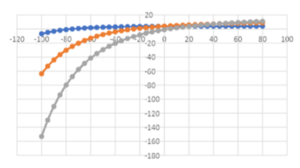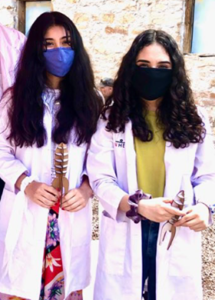Hi there! I am Carmen, and this was my first and last week working with Dr. Colleen Clancy, Ph.D. Candidates Gonzalo Hernandez, John Dawson, and Adam Rose and Ph.D. student Brightany Li at the University of California, Davis School of Medicine, in the Department of Physiology and Membrane Biology.
We began the week with a presentation from all of our mentors. Since part of the research that they do at the Clancy lab has to do with cardiac arrhythmias, that was the focus of the presentation. The heart is a crucial organ, but also extremely fragile. Like I mentioned in last week’s blog, hERG is a potassium ion channel located in the heart. This ion channel can easily clog with medicine that we can take regularly, like antacids. By disrupting this ion channel, important functions in the heart can not take place. Depolarization and repolarization of the heart depend on the exchange of sodium and potassium ions through the membrane. However, if hERG is clogged, the heart cant repolarize or relax, which causes what is known as a cardiac arrhythmia.
In last week’s blog, I mentioned that the movement of ions through the proteins creates an electric current. That current can be represented as an electric circuit since the ion channels serve as resistors. However, hERG is not the only ion channel present in the cell, there are sodium, calcium, and potassium channels that also need to be taken into consideration. To be able to understand how cardiac arrhythmias are caused and the effect they have in the heart, these electric currents are crucial. This is where the task for this week began. We were supposed to create a code in the language of C++ to interpret how the current and voltage change over time. However, due to the lack of time we had, we only interpreted the data for one hERG channel. We discussed a way of clogging the sodium and calcium channels (since they weren’t relevant in this case) if we were to due it experimentally with the Patch Clamp method. 
The code was provided to us by our mentor Ph.D. Candidate Gonzalo. Our task was to write the code in a C++ simulator and to run it to see if we obtained any type of errors. The day after, Ph.D. student Brightany explained the meaning of the code. I have never been exposed to coding and really caught my interest since I saw how relevant and useful a tool like that can be. We ended the day by plotting the data and I received the following graph.
The last day of the internship ended with a Zoom meeting with our mentors from the past two sections of the internship.
I have been interested in pharmaceutical chemistry for a couple of years, but I have never been introduced to this field. I have read about and researched pharmaceutical and natural products chemistry, but they do not compare to actively learning with experts in the field. Although this internship was not directly related to my area of interest, the work done at the Yarov-Yarovoy, Clancy, and Vorobyov labs can lead to significant improvement in the pharmaceutical field.
I am grateful to have gotten the opportunity to work with such amazing people who have motivated me to continue with the idea to pursue science. I have such an immense appreciation for the nine extraordinary mentors who planned the internship, and of course, thanks to the Pinhead Institute for providing opportunities like these to students that are excited to pursue the world of science.
I was able to volunteer at Pinhead’s Science of Cocktails fundraiser last Saturday. I am very grateful for all of those who donated and purchased the cocktail kits since it helps the organization. It was exciting to meet Kelly Stellmacher since I have been remotely working with her for the past five weeks. I also had fun seeing my classmates and all of the people who stopped by and asked about our internships.
Again I hope everyone is staying safe and healthy.




There are no comments published yet.